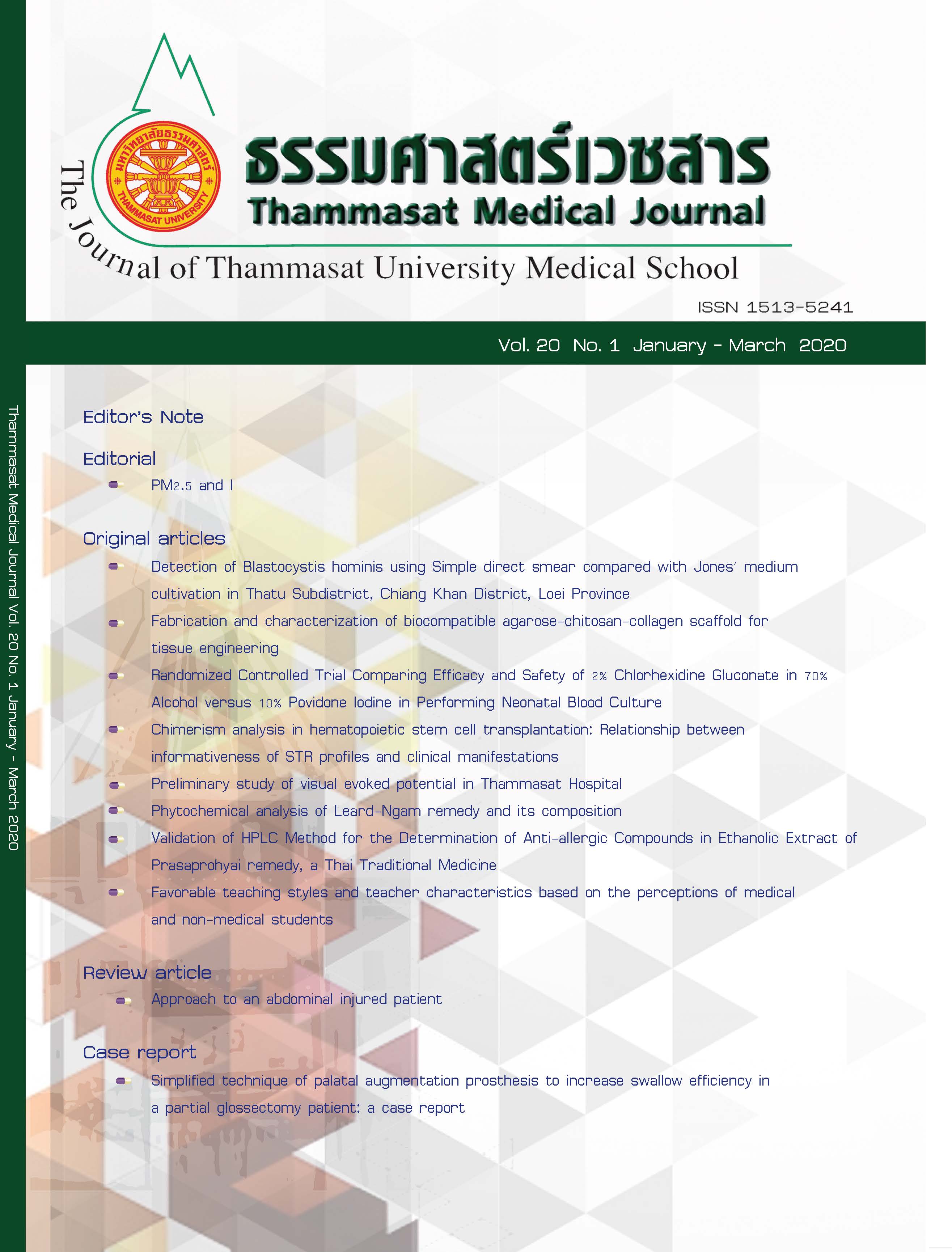Preliminary study of visual evoked potential in Thammasat Hospital
คำสำคัญ:
Visual evoked potential, Latency, Amplitudeบทคัดย่อ
Background: Visual evoked potential (VEP) is one of the basic tests for evaluating the function of the
visual pathway. In the interpretation, each examination room should have a normal value for
comparison, because the normative data of each is not the same.
Purpose: To determine the latency and amplitude of normal VEP between the age of 15 to 70 years.
Materials and methods: The study was conducted in neurological lab of Thammasat hospital on healthy subjects between the age of 15 to 70 years. Pattern-reversal VEP parameters: P100 latency and amplitude (N75-P100) were recorded.
Results: Thirty healthy subjects (male:18, female:12) were included in the study. Range of age between 15 to 68 years (mean:32.5 years). The mean latency in male subjects was 103.10 ± 3.48 and 104.60 ± 4.19 milliseconds in the right and left eye, respectively. The mean amplitude was 14.00 ± 8.28 and 14.40 ± 8.78 microvolt in the right and left eye, respectively. The mean latency in female subjects was 100.70 ± 6.18 and 100.98 ± 5.49 milliseconds in the right and left eye, respectively. The mean amplitude was 15.69 ± 8.64 and 13.79 ± 7.24 microvolt in the right and left eye, respectively.
Conclusion: The present study showed that no significant gender difference in VEP latency and amplitude. In clinical application, there is a difference in the recording instruments and study protocol, which affect the difference in parameters. Therefore, each room should have its normative data for reference.



